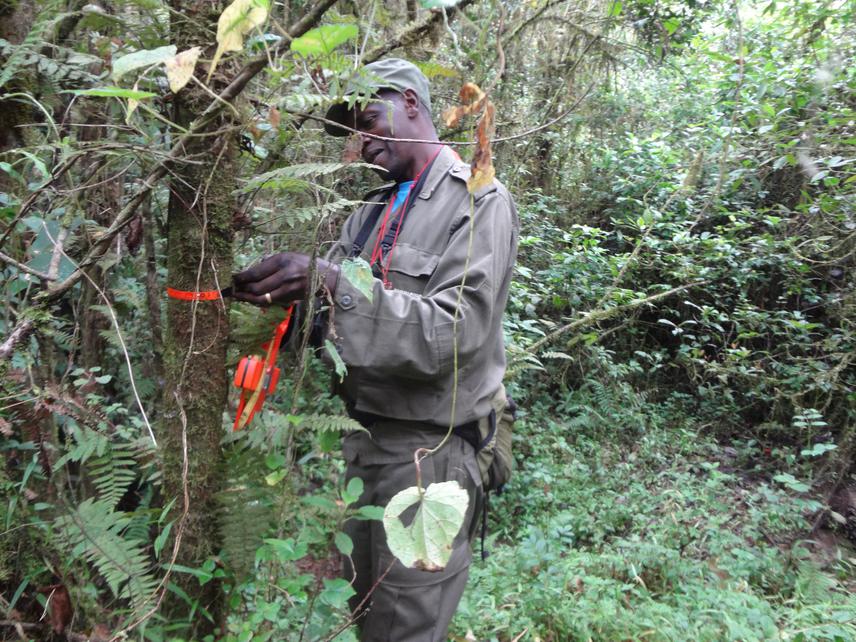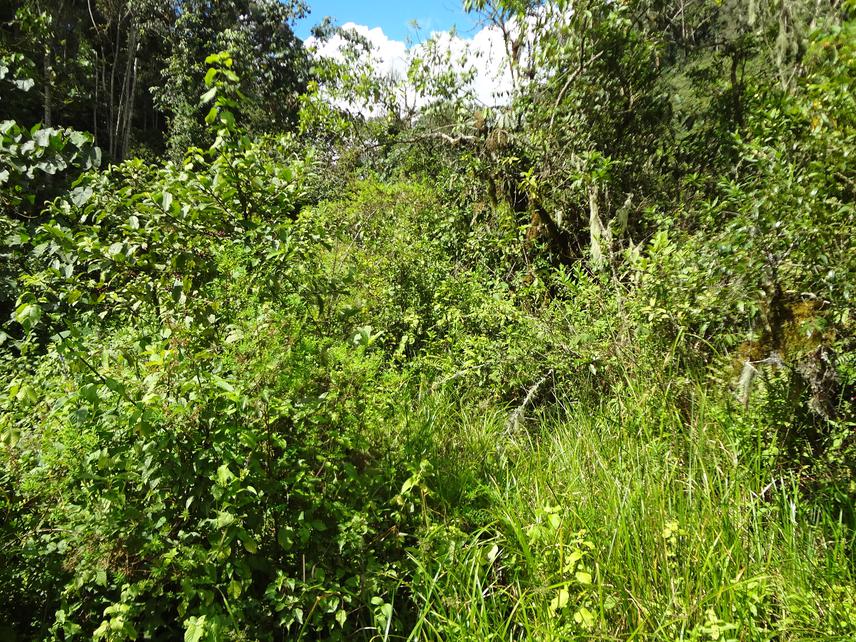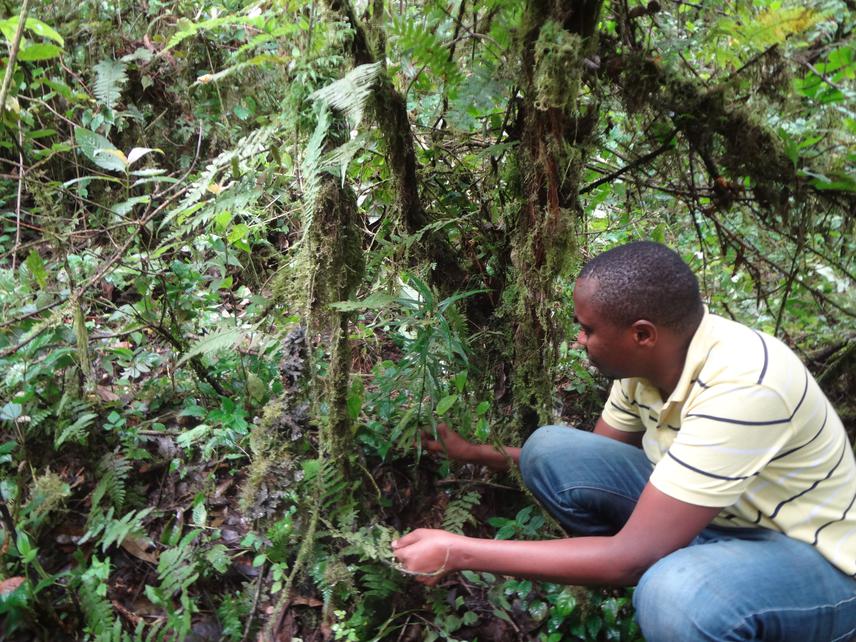Mugabe Robert
This study seeks to assess tree diversity and regeneration in abandoned mining sites within Nyungwe National Park with a view to understanding vegetation recovery in this forest.

Field Assistant Gakima measuring the circumference of a tree.
- Background for the project

Abandoned mining site.
Mining activities pose a great threat to floral diversity, composition, and regeneration in natural habitats. In most cases, the progress and direction of recovery in abandoned mining sites is often unclear. Mining activities in Nyungwe National Park in Rwanda dates back to 1930’s when Nyungwe was still a forest reserve. Nevertheless, even after its gazettement as a national park, illegal mining activities have been reported in the park. Mining in the forest leads to vegetation clearance and associated soil disturbances. After mining activities, the natural regeneration of the forest may be hampered or even arrested. Mining activities may also lead to future changes in the population structure and composition of the forest. Some studies of regeneration (e.g. Peterson and Heemskerk, 2000) in abandoned mining sites within tropical forests elsewhere have indicated slow or arrested regeneration. However, in Nyungwe, while several ecological studies have been conducted, plant regeneration in abandoned mining sites within this important landscape is poorly understood. As such, information on various aspects of regeneration in abandoned mining sites is still scanty. The lack of such information may hinder the formulation of workable strategies for the restoration of abandoned mining sites in Nyungwe. Understanding species diversity and regeneration in forest areas degraded by mineral mining activities therefore may benefit from the assessment of the current state of biodiversity in such areas. Key to this is the assessment of species composition and diversity of indicator taxa in such environments.

The PI assessing a seedling.
The project will assess regeneration in abandoned mining sites within Nyungwe National Park. Though mining has a long history in NNP, regeneration in abandoned mining sites in this important landscape has remained poorly understood. Thus, the project will involve determining the diversity, composition, and regeneration status of trees in abandoned mining sites.
- Specific objectives of the project
Specifically the study will:
1) Determine the composition and diversity of trees in abandoned mining sites within Nyungwe NP.
2) Determine the regeneration status and the population structure of trees in abandoned mining sites.
3) Determine the most critical environmental factors influencing tree species composition, diversity and regeneration in the study sites.
The study will further promote community conservation education whereby community based conservation education officers will be trained on the impacts of mining activities in forest ecosystems.
- Methods to be used
Sampling procedure and data collection: Sampling will be done in abandoned mining sites and unmined sites (reference sites). The sampling procedure will involve stratified random sampling where by abandoned mined sites and unmined sites will be stratified into four strata (4). Sites abandoned <5, ≥5<10, ≥10 years, and unmined sites. In each stratum, four sites will be randomly selected and in each site, 4 plots of 20×20 m will be established along a transect and their GPS points recorded. In total, 64 plots will be assessed. An assessment of trees in nested plots will be done. Data on environmental variables at each site (plots) will be recorded as well (elevation, slope, Aspect, and soil samples). The amount of ground vegetation will be estimated visually per plot and scored in different categories following Eilu (1995). Signs of mining e.g. water pools and tree stumps will be enumerated and recorded. The DBH of trees, poles, and saplings will be measured at breast height (1.3m) and for seedlings at the root collar (ground level). The Illustrated field guide to plants of Nyungwe National Park, Rwanda (Fischer and Killman, 2008) will be used in the identification of plants.
- Application of the findings:
The findings will provide a better understanding of the recovery process in abandoned mining sites within Nyungwe NP. The results generated will be used by Nyungwe NP managers to design proper restoration interventions for the abandoned mining sites within the forest. Furthermore, the results may reveal or predict ecological changes in the forest and act as a basis for designing monitoring programs. The findings may also guide further research on plant regeneration in abandoned mining sites in NNP or other sites where mining has been carried out.